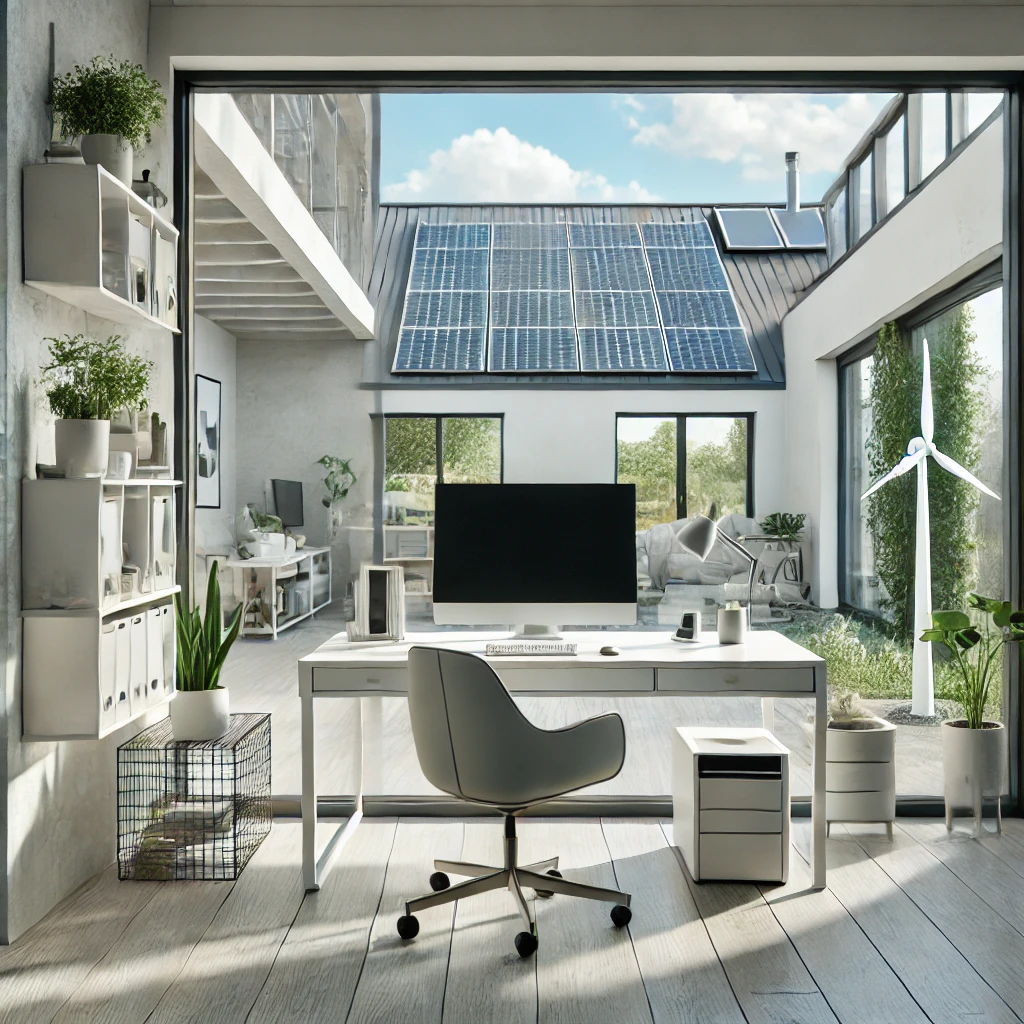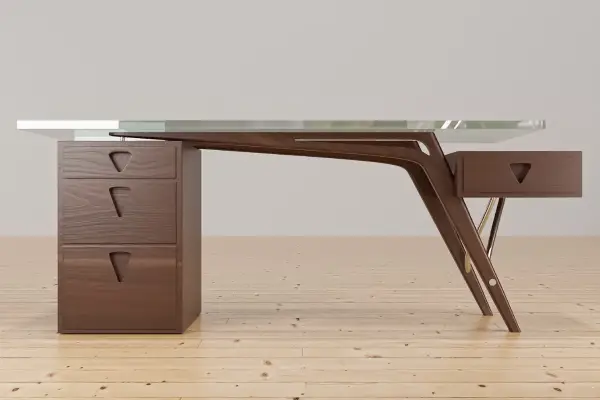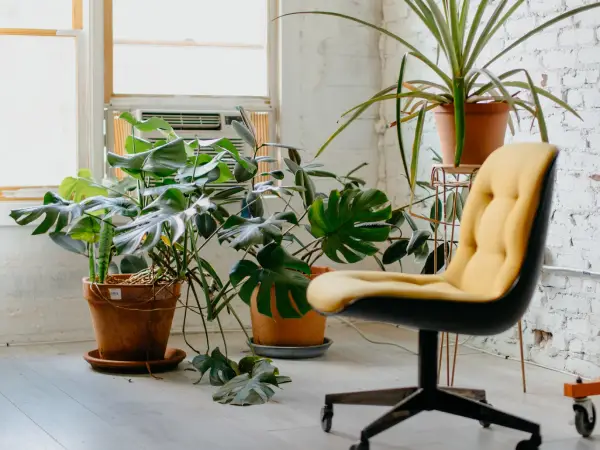In today’s fast-paced world, creating a workspace that promotes calmness and productivity is essential. One of the most effective ways to achieve this is through minimalist decor. Minimalism is not just a design trend; it’s a lifestyle choice that emphasizes simplicity, functionality, and tranquility. By stripping away the unnecessary and focusing on what truly matters, minimalist decor can transform your office into a serene and efficient environment.
A well-designed minimalist office can help reduce stress, improve focus, and increase overall productivity. The clean lines, uncluttered spaces, and thoughtful use of color and light create a harmonious atmosphere that allows you to concentrate on your work without distractions. Moreover, a minimalist approach can make your workspace more aesthetically pleasing, enhancing your sense of well-being and satisfaction.
In this article, we will explore the principles of minimalist decor and provide practical tips for creating a calm and productive atmosphere in your office. From decluttering and choosing the right furniture to incorporating natural elements and personal touches, we’ll guide you through the process of transforming your workspace into a minimalist haven. Whether you’re starting from scratch or looking to refine your current setup, these insights will help you design an office that supports both your mental clarity and professional success.
Understanding Minimalist Decor
Definition and Principles of Minimalist Design
Minimalist decor is a design philosophy that emphasizes simplicity, functionality, and the use of minimal elements to create a clean and uncluttered space. The core principles of minimalist design include:
Simplicity: Focus on essential elements, eliminating anything that is unnecessary or overly decorative.
Functionality: Each item in the space should serve a purpose, ensuring that everything contributes to the overall efficiency and usability of the room.
Clean Lines: Use of geometric shapes and clean lines to create a sense of order and structure.
Neutral Color Palette: A restrained color scheme, often dominated by whites, grays, and other neutral tones, to maintain a calm and cohesive look.
Quality Over Quantity: Invest in high-quality items that are durable and timeless, rather than accumulating numerous cheap or trendy pieces.
Key Elements of Minimalist Decor
To effectively implement minimalist decor, focus on the following key elements:
Furniture: Choose furniture with simple designs and multifunctional uses. Pieces with built-in storage can help maintain an uncluttered look.
Storage Solutions: Utilize hidden storage options, such as under-desk drawers, wall-mounted shelves, and storage bins, to keep the space tidy and organized.
Lighting: Incorporate natural light as much as possible, complemented by minimalist light fixtures that provide ample illumination without overwhelming the space.
Decor: Select a few carefully chosen decorative items that add personality and interest without cluttering the room. Think of art pieces, plants, or a sleek desk lamp.
How Minimalist Decor Promotes Calmness and Productivity
Minimalist decor contributes to a calm and productive atmosphere in several ways:
Reduced Distractions: An uncluttered space minimizes visual and mental distractions, allowing you to focus more effectively on your tasks.
Enhanced Clarity: The simplicity and order of minimalist design can help clear your mind, making it easier to concentrate and think creatively.
Improved Organization: By prioritizing functionality and organization, minimalist decor ensures that everything has its place, reducing the time and stress associated with finding and managing items.
Calming Aesthetics: The use of neutral colors, clean lines, and natural light creates a serene environment that can reduce stress and promote a sense of well-being.
Understanding the principles and benefits of minimalist decor is the first step toward creating a workspace that enhances both your calmness and productivity. The next section will delve into the importance of decluttering and organizing your office to achieve a minimalist look and feel.
Decluttering and Organizing
Importance of a Clutter-Free Environment
A clutter-free environment is fundamental to minimalist decor and plays a crucial role in creating a calm and productive workspace. Clutter can be distracting, overwhelming, and can significantly impact your mental clarity and focus. By eliminating unnecessary items and organizing your space, you can create an environment that fosters efficiency and tranquility.
Tips for Decluttering Your Workspace
Decluttering can seem like a daunting task, but with a systematic approach, it can be manageable and even rewarding. Here are some tips to help you get started:
Assess and Prioritize: Begin by assessing everything in your workspace. Determine what is essential for your daily tasks and what can be removed. Prioritize items that are functional and contribute to your productivity.
Remove Unnecessary Items: Identify items that are not used regularly or that do not serve a purpose in your workspace. Donate, recycle, or discard these items to free up space.
Categorize and Sort: Group similar items together and sort them into categories. This makes it easier to organize and find things when needed.
Use the “One In, One Out” Rule: For every new item you bring into your office, remove one existing item. This helps maintain balance and prevents clutter from accumulating.
Effective Organization Strategies for a Minimalist Office
Once you have decluttered, implementing effective organization strategies is key to maintaining a minimalist office. Here are some methods to consider:
Hidden Storage Solutions: Utilize hidden storage options to keep your workspace looking clean and uncluttered. Built-in drawers, cabinets, and wall-mounted shelves are excellent choices for storing items out of sight.
Desk Organization: Keep your desk surface clear by using organizers for essential items. Desk trays, pen holders, and cable management solutions can help keep everything in order.
Digital Organization: Reduce paper clutter by going digital. Use cloud storage for documents, digital calendars for scheduling, and productivity apps to manage tasks. Regularly back up your digital files to ensure they are secure.
Labeling and Containers: Use labeled containers and bins to store smaller items and keep them organized. Clear labels make it easy to find what you need without rummaging through piles of stuff.
Regular Maintenance: Set aside time each week to tidy up your workspace and ensure everything is in its place. Regular maintenance helps prevent clutter from building up and keeps your office looking neat.
By decluttering and organizing your workspace, you lay the foundation for a minimalist office that is both functional and aesthetically pleasing. This process not only enhances your productivity but also contributes to a sense of calm and order. The next section will guide you through choosing the right furniture to complement your minimalist office design.
Choosing the Right Furniture
Characteristics of Minimalist Furniture
Selecting the right furniture is essential for achieving a minimalist office design. The key characteristics of minimalist furniture include simplicity, functionality, and comfort. Here’s what to look for:
Simplicity: Minimalist furniture features clean lines, geometric shapes, and a lack of ornate details. Look for pieces with straightforward designs that contribute to a clutter-free environment.
Functionality: Each piece of furniture should serve a clear purpose and ideally offer multiple functions. For example, a desk with built-in storage or a chair that provides both comfort and support.
Comfort: While minimalist furniture focuses on simplicity, it should not compromise on comfort. Choose ergonomic designs that support your posture and well-being during long work hours.
Tips for Selecting Furniture That Promotes Productivity
Choosing furniture that enhances productivity involves considering both form and function. Here are some tips to guide your selection:
Ergonomic Design: Invest in ergonomic furniture that supports healthy posture and reduces strain. An adjustable chair and a desk at the correct height can make a significant difference in your comfort and productivity.
Space Efficiency: Opt for furniture that maximizes your space without overwhelming it. Multi-functional pieces, like a desk with storage drawers or a foldable table, can help you make the most of a smaller office.
Quality Materials: Select furniture made from high-quality, durable materials. This ensures longevity and reduces the need for frequent replacements, aligning with minimalist principles of quality over quantity.
Neutral Colors: Stick to neutral or subdued color palettes for your furniture to maintain a cohesive and calming atmosphere. White, gray, black, and natural wood tones are popular choices in minimalist design.
Examples of Minimalist Office Furniture
To give you a better idea of what to look for, here are some examples of minimalist office furniture that combine simplicity, functionality, and comfort:
Desks: A sleek, simple desk with clean lines and built-in storage options. Consider a standing desk for added health benefits and versatility.
Chairs: An ergonomic office chair with adjustable height, lumbar support, and a minimalist design. Look for chairs with breathable fabric or leather in neutral colors.
Storage Units: Wall-mounted shelves, modular storage systems, and under-desk drawers that help keep your office organized without adding visual clutter.
Lighting: Minimalist desk lamps and floor lamps with clean lines and adjustable features. Natural light is ideal, so consider using light-filtering blinds or curtains to control the ambiance.
Accessories: Minimalist accessories like a sleek monitor stand, cable management solutions, and simple desk organizers to keep your workspace tidy.
Choosing the right furniture is a crucial step in creating a minimalist office that is both functional and aesthetically pleasing. By focusing on simplicity, functionality, and comfort, you can design a workspace that supports your productivity and well-being. The next section will explore the impact of color palette and lighting on creating a calm and productive atmosphere.
Color Palette and Lighting
Impact of Color on Mood and Productivity
Color plays a significant role in setting the mood and ambiance of your workspace. In a minimalist office, choosing the right color palette can enhance calmness and productivity. Here’s how different colors can influence your work environment:
Neutrals: Shades of white, gray, beige, and taupe are staples of minimalist design. These colors create a clean, serene backdrop that promotes focus and clarity. They also reflect natural light, making smaller spaces feel larger and more open.
Soft Pastels: Soft blues, greens, and lavender can add a touch of tranquility to your office without overwhelming the minimalist aesthetic. These colors are soothing and can help reduce stress levels during intense work sessions.
Accents of Bold Colors: While minimalist offices typically lean towards neutral tones, incorporating accents of bold colors like navy blue, deep green, or mustard yellow can add visual interest and stimulate creativity. Use these colors sparingly to maintain balance and harmony in your space.
Recommended Color Schemes for a Minimalist Office
When selecting a color scheme for your minimalist office, consider the following options:
Monochromatic: Stick to varying shades of a single color for a cohesive and harmonious look. For example, pair different tones of gray with white accents for a timeless and sophisticated ambiance.
Contrasting Neutrals: Combine light and dark neutrals, such as white with charcoal or beige with slate gray, to create depth and contrast while maintaining a minimalist feel.
Natural Tones: Incorporate earthy tones like soft browns, muted greens, and sandy beiges to bring a sense of warmth and connection to nature into your workspace.
Importance of Natural Light and Tips for Maximizing It
Natural light is ideal for a minimalist office as it enhances the feeling of openness and brightness. Here are some tips for maximizing natural light in your workspace:
Position Desks Near Windows: Place your desk perpendicular to windows to maximize natural light exposure without causing glare on your computer screen.
Use Light-Filtering Curtains: Opt for sheer or light-filtering curtains that allow natural light to enter while providing privacy and reducing harsh glare.
Reflective Surfaces: Arrange furniture and accessories to reflect natural light throughout the room. Mirrors, glass tabletops, and light-colored walls can help bounce light around the space.
Clean Windows Regularly: Keep windows clean to ensure maximum sunlight penetration. Dirt and grime on windows can block sunlight and diminish its effectiveness.
Choosing Artificial Lighting That Complements Minimalist Design
In addition to natural light, artificial lighting plays a crucial role in creating a well-lit and inviting workspace. Consider the following when choosing artificial lighting:
Minimalist Light Fixtures: Select light fixtures with clean lines and simple designs that blend seamlessly with your minimalist decor. Avoid ornate or overly decorative fixtures that can disrupt the clean aesthetic.
Task Lighting: Use adjustable desk lamps or floor lamps to provide focused lighting for specific tasks. Position task lights to reduce eye strain and improve visibility while working.
Ambient Lighting: Install overhead lights or wall-mounted fixtures that provide ambient lighting to brighten the entire room evenly. Choose bulbs with a warm color temperature (around 2700K to 3000K) to create a cozy atmosphere.
By carefully selecting a color palette that promotes calmness and productivity, maximizing natural light, and choosing appropriate artificial lighting, you can create a minimalist office that is both visually appealing and conducive to work. The next section will explore the incorporation of natural elements to further enhance your workspace environment.
Incorporating Natural Elements
Benefits of Adding Plants and Natural Materials
Integrating natural elements into your minimalist office can significantly enhance the overall ambiance and well-being of the space. Here are some benefits:
Air Quality: Plants act as natural air purifiers, improving indoor air quality by absorbing toxins and releasing oxygen. This can lead to better concentration and overall health.
Visual Appeal: Greenery adds a touch of color and life to a minimalist space, creating a more inviting and calming atmosphere.
Stress Reduction: Studies have shown that being around plants can reduce stress levels and increase feelings of happiness and relaxation.
Connection to Nature: Incorporating natural materials such as wood, stone, or bamboo fosters a sense of connection to the outdoors, promoting a sense of harmony and balance.
Tips for Selecting and Arranging Plants
When choosing plants for your minimalist office, consider the following tips:
Low-Maintenance Plants: Opt for low-maintenance plants that thrive indoors and require minimal watering and care. Succulents, snake plants, pothos, and peace lilies are excellent choices for beginners.
Size and Placement: Select plants that fit the scale of your office space. Place taller plants in corners or near windows to maximize vertical space, while smaller plants can be placed on desks or shelves.
Matching Aesthetics: Choose pots and planters that complement your minimalist decor. Opt for simple, neutral-colored containers or sleek, modern designs that blend seamlessly with your office furniture and color palette.
Using Wood, Stone, and Natural Materials
In addition to plants, incorporating natural materials such as wood, stone, and bamboo can add warmth and texture to your minimalist office. Here are some ways to incorporate these materials:
Wooden Furniture: Invest in desks, shelves, or chairs made from natural wood to bring a sense of warmth and sophistication to your workspace.
Stone Accents: Use stone or marble tabletops, coasters, or decorative objects to add a touch of elegance and natural beauty to your office.
Bamboo Accessories: Consider bamboo desk organizers, pen holders, or trays to introduce sustainable and eco-friendly materials into your workspace.
Maintaining Balance and Minimalism
While adding natural elements can enhance your minimalist office, it’s essential to maintain balance and avoid overcrowding the space. Select a few carefully curated pieces that complement your overall design aesthetic without overwhelming it. Remember, minimalist decor is about simplicity and intentionality.
By incorporating plants, natural materials, and thoughtful design choices, you can create a minimalist office that not only looks beautiful but also promotes well-being and productivity. The next section will explore how to personalize your minimalist space while maintaining its clean and organized look.






